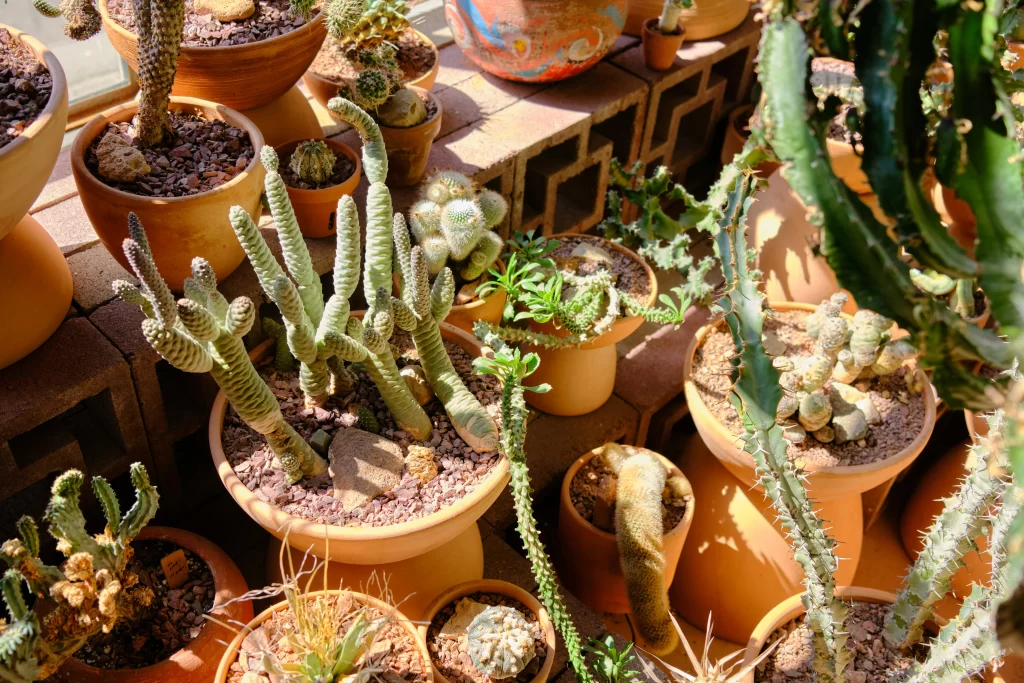Introduction
Do you love adding a touch of green to your indoor space? Or maybe you’re an advocate for sustainable living, always on the hunt for unique plants to diversify your collection. If so, the Peni plant might just be what you’re looking for. In this blog post, we will explore the fascinating world of Peni plants, their unique characteristics, and how you can successfully grow them indoors. Whether you’re an experienced plant enthusiast or just starting out, you’ll find valuable insights and practical tips to enhance your indoor garden with these incredible plants.
What are Peni Plants?
Peni plants, scientifically known as Petalonyx nitidus S. Watson, are commonly referred to as shinyleaf sandpaper plants. These plants are part of an intriguing species found in specific regions and are known for their distinctive appearance and texture. The leaves of Peni plants have a unique shininess, while their surface feels like sandpaper—hence the name. These plants not only add aesthetic value to your indoor garden but also serve various ecological functions.
The Origin and Habitat of Peni Plants
Peni plants originate from arid regions where they thrive in tough conditions. Understanding their natural habitat is crucial for replicating these conditions indoors. Typically, they grow in sandy or rocky soils and receive plenty of sunlight. By mimicking these conditions, you can ensure that your Peni plants flourish in your indoor garden.
Unique Characteristics of Peni Plants
One of the most remarkable features of Peni plants is their shinyleaf texture. This quality not only makes them stand out but also contributes to their durability. Additionally, Peni plants have a unique flowering pattern that adds a splash of color to any space. These flowers are not just visually appealing but also play a role in the plant’s reproduction.
Benefits of Growing Peni Plants Indoors
Growing Peni plants indoors comes with several benefits. Firstly, they are relatively low-maintenance, making them ideal for both novice and experienced gardeners. Their unique texture and appearance can serve as a conversation starter and add visual interest to your home. Additionally, Peni plants contribute to better air quality by absorbing pollutants and releasing oxygen.
Aesthetic Appeal
Peni plants can significantly enhance the visual appeal of your indoor garden. Their shiny, textured leaves provide a unique contrast to other plants, creating a more dynamic and visually engaging space.
Low Maintenance
One of the greatest benefits of Peni plants is their low maintenance nature. These plants are resilient and adaptable, requiring minimal care compared to other indoor plants. This makes them perfect for busy individuals or those new to indoor gardening.
Air Purification
Like many indoor plants, Peni plants contribute to cleaner air within your home. They help filter out toxins and improve air quality, creating a healthier living environment for you and your family.
How to Care for Your Peni Plant
Light Requirements
Peni plants thrive in bright, indirect light. Place them near a window where they can receive plenty of sunlight without being exposed to direct rays, which can scorch their leaves.
Watering Schedule
Watering Peni plants is straightforward. Allow the top inch of soil to dry out between waterings. Overwatering can lead to root rot, so it’s essential to ensure proper drainage and avoid waterlogged soil.
Soil and Potting
Use a well-draining potting mix to keep your Peni plant healthy. A mix designed for succulents or cacti can work well. Ensure your pot has drainage holes to prevent water from accumulating at the bottom.
Propagating Peni Plants
Step-by-Step Propagation Guide
Propagating Peni plants can be a rewarding experience. Follow these steps for successful propagation:
- Select a healthy stem from the parent plant.
- Use a clean, sharp knife to cut a 4-6 inch section.
- Allow the cutting to dry for a couple of days to form a callus.
- Plant the cutting in a well-draining soil mix and water sparingly.
Tips for Successful Growth
Ensure the cutting receives bright, indirect light and maintain a consistent watering schedule. With time and patience, your cutting will develop roots and grow into a new Peni plant.
Common Challenges and Solutions
Pests and Diseases
While Peni plants are relatively hardy, they can still fall victim to pests like aphids and spider mites. Regularly inspect your plants and treat any infestations with insecticidal soap or neem oil.
Overwatering Issues
Overwatering is a common issue that can lead to root rot. Always check the soil moisture before watering and ensure your pots have adequate drainage.
Leaf Discoloration
Yellowing or browning leaves can indicate several issues, including overwatering, underwatering, or insufficient light. Adjust your care routine accordingly to address these problems.
Integrating Peni Plants into Your Home Decor
Styling Tips
Incorporate Peni plants into your home decor by placing them in stylish pots that complement your interior design. Their unique texture can add depth and interest to any room.
Creating Plant Groups
Group Peni plants with other indoor plants to create a mini indoor jungle. The contrast between the shiny leaves of the Peni plant and the foliage of other plants can create a visually stunning display.
Seasonal Displays
Switch up your plant arrangements seasonally to keep your decor fresh. Move your Peni plants to different locations within your home to take advantage of varying light conditions.
Connecting with the Plant Community
Join Online Forums
Engage with other plant enthusiasts by joining online forums and social media groups dedicated to indoor gardening. Share your experiences, ask for advice, and learn from others.
Attend Local Plant Events
Check out local plant events, such as plant swaps and gardening workshops. These events are great opportunities to meet fellow plant lovers and expand your collection.
Share Your Journey
Document your Peni plant’s growth and share it on social media. Inspire others with your indoor gardening success and connect with a broader community of plant enthusiasts.
How to Grow Peni Plants Indoors
Growing Peni plants indoors requires some specific conditions to ensure they thrive. Firstly, choose a well-draining soil mix that mimics their natural habitat. Secondly, place them in a location where they receive plenty of indirect sunlight. Watering should be done carefully to avoid over-watering, which can lead to root rot.
Choosing the Right Pot for Your Peni Plants
Selecting the right pot is crucial for the health of your Peni plants. Opt for pots with good drainage to prevent water from stagnating. Additionally, consider using pots made from breathable materials like terracotta, which can help regulate moisture levels. The size of the pot should also be appropriate for the plant’s root system.
Watering and Fertilizing Peni Plants
Proper watering is essential for the health of your Peni-plants. Allow the soil to dry out between watering sessions to avoid waterlogging. When it comes to fertilizing, use a balanced, slow-release fertilizer to provide essential nutrients. Fertilize during the growing season for the best results.
Light and Temperature Requirements
Peni-plants thrive in bright, indirect sunlight. Place them near a window where they can receive ample light without being exposed to direct sun rays. In terms of temperature, these plants prefer a warm environment. Avoid placing them in areas with drastic temperature fluctuations.
Common Pests and Diseases
Like any other plant, Peni-plants are susceptible to pests and diseases. Common pests include spider mites and aphids, which can be controlled using insecticidal soap or neem oil. Root rot is a common disease caused by over-watering. Ensure proper drainage and avoid waterlogging to prevent this issue.
Pruning and Maintenance Tips
Pruning is essential to keep your Peni plants healthy and encourage new growth. Remove any dead or yellowing leaves to promote better air circulation. Regularly check for pests and treat them promptly to prevent infestations. With proper care, your Peni-plants will thrive and enhance your indoor garden.
The Role of Peni-Plants in Sustainable Living
Peni-plants contribute to sustainable living by improving indoor air quality and providing a natural aesthetic. They can be a part of your eco-friendly lifestyle, reducing the need for artificial air purifiers and adding a natural touch to your home decor. Additionally, their low-maintenance nature means they require fewer resources to thrive.
Community and Resources for Peni Plant Enthusiasts
Joining a community of plant enthusiasts can provide valuable insights and support for growing Peni-plants. Online forums, social media groups, and local gardening clubs are great places to connect with fellow gardeners. Sharing experiences and tips can help you overcome challenges and make the most of your indoor gardening efforts.
Peni plants are a unique addition to any indoor garden, offering both aesthetic and ecological benefits. Their distinctive appearance and low-maintenance nature make them ideal for plant enthusiasts and sustainable living advocates alike. By following the tips and guidelines provided in this post, you can successfully grow Peni plants and enjoy their many benefits. If you’re ready to take your indoor gardening to the next level, start incorporating Peni plants into your collection today. Happy gardening!








